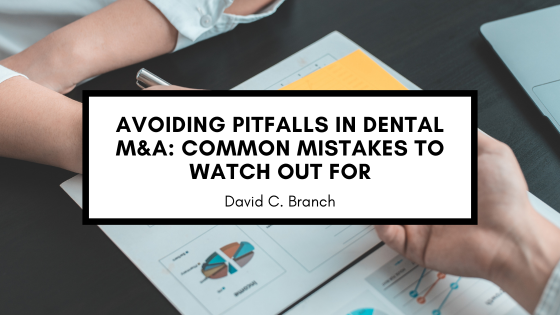Dental mergers and acquisitions (M&A) can be complex and challenging. There are a number of factors to consider, from the legal and financial aspects of the deal to the potential impact on patient care and staff. Unfortunately, many dental practices fall into common pitfalls when it comes to M&A. In this blog, learn more about some of the most common mistakes to watch out for when engaging in dental M&A.
Not conducting due diligence
One of the biggest mistakes that dental practices can make when engaging in M&A is not conducting due diligence. Due diligence is the process of thoroughly researching and analyzing a potential acquisition target to ensure that there are no hidden risks or liabilities. Without due diligence, a dental practice may end up acquiring a practice that has significant financial or legal problems, which can be costly and damaging to both parties.
Overvaluing the practice
Another common mistake in dental M&A is overvaluing the practice being acquired. It’s important to remember that a practice’s value is not solely determined by its revenue or profit. Other factors, such as the quality of patient care, staff retention rates, and market competition, can also impact a practice’s value. Overvaluing a practice can lead to financial strain for the acquiring practice and may ultimately result in the failure of the acquisition.
Not considering the impact on staff and patients
When engaging in dental M&A, it’s crucial to consider the impact on staff and patients. Staff members may be worried about job security and changes to their roles and responsibilities, while patients may be concerned about changes to their care or providers. It’s important to communicate clearly with staff and patients throughout the M&A process and ensure that their concerns are addressed.
Ignoring legal and regulatory issues
Dental M&A can be complicated from a legal and regulatory perspective. There may be state or federal laws and regulations that need to be followed, such as those related to patient privacy or billing practices. Ignoring these issues can lead to costly fines and legal problems for both parties.
Rushing the process
Finally, one of the most common mistakes in dental M&A is rushing the process. M&A can be time-consuming and stressful, but it’s important to take the necessary time to ensure that the deal is beneficial for both parties. Rushing the process can lead to mistakes, oversights, and regrets down the line.
Dental M&A can be a great way for practices to grow and expand, but it’s important to avoid common pitfalls. By conducting due diligence, valuing the practice appropriately, considering the impact on staff and patients, addressing legal and regulatory issues, and taking the time to ensure a successful deal, dental practices can avoid costly mistakes and achieve their M&A goals.

